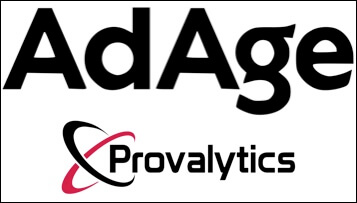Adobe Attribution: AI-Powered Marketing Mix or Not?
“Adobe’s new tool likely will appeal to existing Adobe analytics users, but it’s not the only way to overcome the privacy restrictions hampering MTA or the speed and cost issues that long have hampered MMM, said Jeff Greenfield, a pioneer in MTA who now is CEO of Provalytics. His company takes an alternate approach, combining elements of attribution and marketing mix modeling to measure “incrementality,” or the incremental impact of changing spending across a variety of online and offline media.”
“AI, while it’s a hot buzzword in marketing, is probably a misnomer here, Greenfield said. Few if any systems in marketing analytics truly show signs of human cognition or original thinking that are hallmarks of AI, he said. “Machine learning” is likely a more accurate description, he said, of the series of algorithms that could go into automating a marketing mix modeling process.”
🚀 Yes, I Want The 2024 Playbook!
Process that takes months is reduced to weeks, becoming practical for more marketers and potentially helping prove their worth
Adobe is launching a marketing mix modeling service that uses artificial intelligence to assess return on investment in weeks rather than the months it typically takes for such analytics.
The upshot is that marketers can use the tool, which will be generally available as part of the Adobe Experience Cloud, to adjust media and marketing plans on the fly, or at least within a month or quarter, rather than taking a retrospective look at what happened in the past to adjust future spending.
The tool, powered by Adobe’s Sensei AI engine, also appears practical for smaller and mid-size marketers that don’t have teams of data scientists on staff and often can’t afford the price tag for an outside marketing mix modeling project. One early pilot user was AAA Northeast.
Adobe’s move comes as marketing mix modeling (MMM) enjoys a renaissance after years of losing ground to multi-touch attribution (MTA). Making the AI tool available across an already huge base of Adobe could fuel the growth of MMM further.
Attribution has taken a hit because it relies heavily on tracking the online behavior and purchases of individuals, which has grown more challenging amid the dwindling availability of cookies and digital identifiers and will become even harder once Google follows through on plans to eliminate third-party cookies from its Chrome browser. Google has delayed the move multiple times, with plans to now eliminate cookies by the end of 2024.
MMM uses modeling based on a variety of data streams but doesn’t require individual identifiers. And the approach long has focused on offline media—where it had its roots—in addition to digital. But it also generally has been costly and time-consuming, requiring six- or seven-figure price tags and months or work.
Big impact in one month for AAA
An early pilot user of Adobe’s “AI as a service” approach is AAA Northeast, which used it in March to deliver a 28% increase in lead generation for its auto insurance business while reducing advertising spending 16% for the month.
“Our tech stack is primarily Adobe,” said Lisa Melton, senior VP of marketing at AAA Northeast. “And so when they came to us and asked if we wanted to be part of the pilot, we were like, absolutely. It’s every marketer’s goal to make sure your dollars are going where they have the biggest return.”
The AAA Northeast insurance business that was in the pilot uses digital display, search, connected TV, linear TV and a small amount of postcard direct mail, Melton said. Adobe’s AI MMM analysis led her to shift money out of linear TV into display and search.
Melton hopes to continue to testing the AI MMM tool on other lines of business, perhaps including membership acquisition, which has more direct mail in the mix. And she’s now incorporating the Adobe Experience Cloud into her tech stack.
Adobe previously had an AI attribution tool, but in conversations with marketers found that they wanted ROI analytics solutions that cover other media that attribution can’t, including offline cookieless media and social media walled gardens, said Monica Lay, principal product marketing manager for digital experience at Adobe.
Marketing mix modeling can analyze results from those media, but historically took six to 12 months to set up initially and three months to deliver reports on an ongoing basis after that, Lay said. That doesn’t help marketers who want to know how to spend incremental dollars—or cut budgets—within a current budget cycle, she said.
Pressure to deliver more for less
“We’re noticing in customer conversations pressure on senior leadership to deliver more for less,” she said. “We’re seeing budget cuts across marketing spend, but there’s still pressure to deliver the same revenue targets.”
Liz Miller, VP and principal analyst of Constellation Research, who’s tried the AI MMM tool, said she really likes it as “a way of accounting for all that data that can come in as a giant tsunami that no one can really manage. This starts to bring a new layer of what I refer to as decision velocity, which is about making not only good decisions, but making great decisions faster.”
Miller also believes the tool, as part of an Adobe service suite, could open marketing mix modeling to a much wider range of marketers who simply couldn’t afford it before. “Media mix modeling has been cost prohibitive for a lot of organizations,” she said.
Gerry Murray, research director for marketing and sales technologies at IDC, sees Adobe’s move as “an inflection point” for intuitiveness and simplifying how marketers can use models that drive decision-making.
‘Dawning of a new day’
“I think it’s a bit of a dawning of a new day for marketers to have a more holistic ability to show how they drive the revenue and customer lifetime value metrics that the C suite is really interested in, not just the clicks and engagement metrics,” Murray said.
Adobe’s new tool likely will appeal to existing Adobe analytics users, but it’s not the only way to overcome the privacy restrictions hampering MTA or the speed and cost issues that long have hampered MMM, said Jeff Greenfield, a pioneer in MTA who now is CEO of Provalytics. His company takes an alternate approach, combining elements of attribution and marketing mix modeling to measure “incrementality,” or the incremental impact of changing spending across a variety of online and offline media.
AI, while it’s a hot buzzword in marketing, is probably a misnomer here, Greenfield said. Few if any systems in marketing analytics truly show signs of human cognition or original thinking that are hallmarks of AI, he said. “Machine learning” is likely a more accurate description, he said, of the series of algorithms that could go into automating a marketing mix modeling process.


